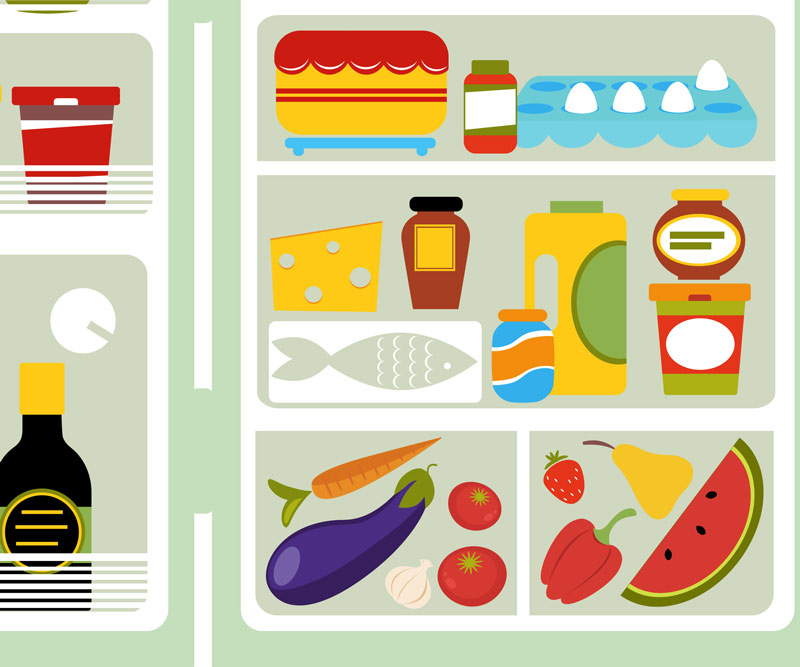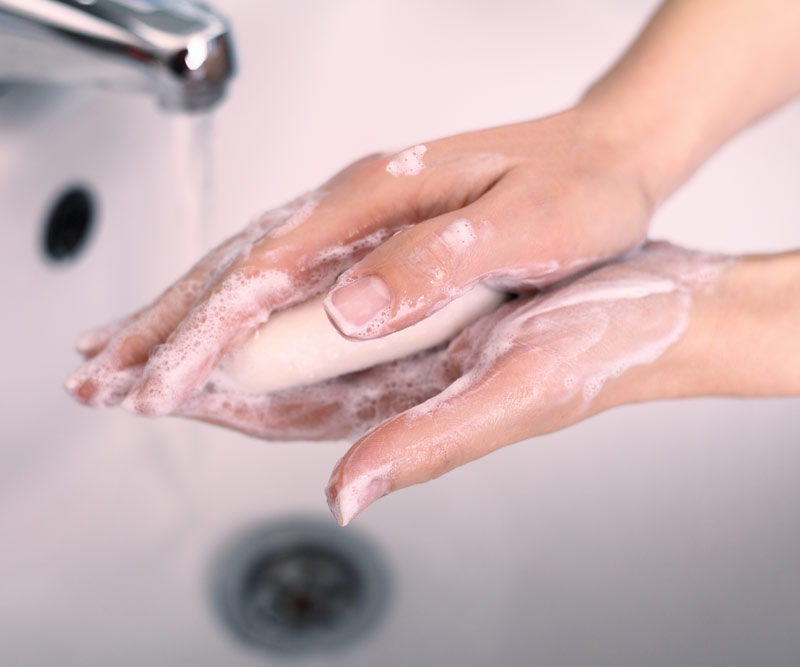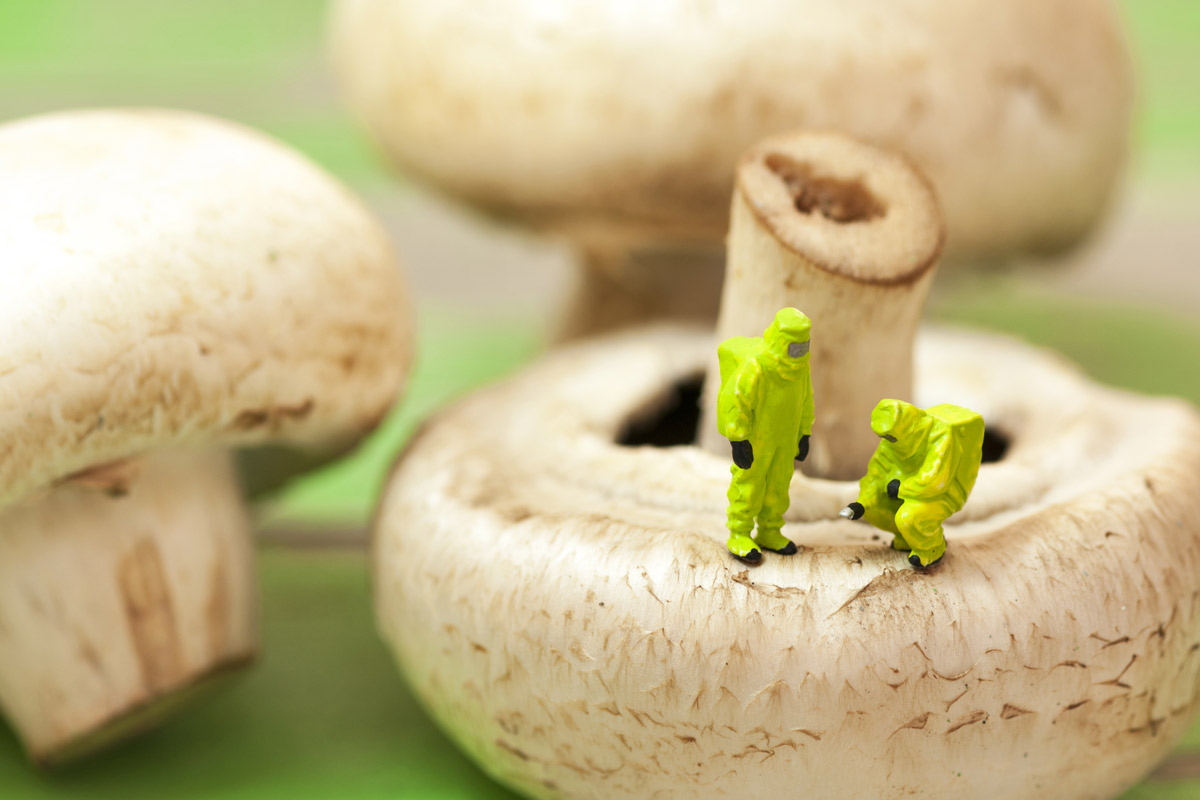
6 Common Foodborne Illnesses & How to Prevent Them
Gut health and the benefits bacteria in your intestinal tract can provide your entire body have been the focus of research as of late.
But what happens when bad bacteria enter your GI tract?
Foodborne illnesses affect approximately 48 million Americans every year. That comes out to an estimated 1 in 6 people who will get seriously sick from something they ate.
While there are many forms of food poisoning out there (250 to be exact), a handful of pathogens are responsible for 90 percent of all foodborne illnesses.
Keep scrolling to ID the top six offenders, plus ways to keep your gut (and health) in check.
Norovirus
If you’ve ever eaten out at a restaurant only to come down with a case of the stomach flu, you’ve had the norovirus.
The most common known pathogen, the Norwalk virus (aka norovirus) is responsible for 5.4 million cases of food poisoning each year.
Chalk up its prevalence to how easily it can be transmitted. People infected with the virus can spread it directly to other people or cross-contaminate food or drinks they prepare for others.
Norovirus can survive on contaminated surfaces and is resistant to both freezing and hot temperatures. It also is resistant to many disinfectants, including disinfectants with chlorine or alcohol.
To avoid infection:
- Wash hands with soap and warm water for at least 20 seconds, particularly after using the bathroom and before preparing food.
- Clean and disinfect food preparation equipment and surfaces using a bleach-based household cleaner as directed on the label.
- Wash fruits and vegetables, and thoroughly cook oysters and other shellfish before eating them. These foods are most commonly contaminated by the norovirus.
- If you believe you have contracted the norovirus, do not cook, prepare or serve food for others.
- Wash soiled clothing or linens immediately. Remove items carefully to avoid spreading the virus. Machine wash, ideally with bleach, and dry.
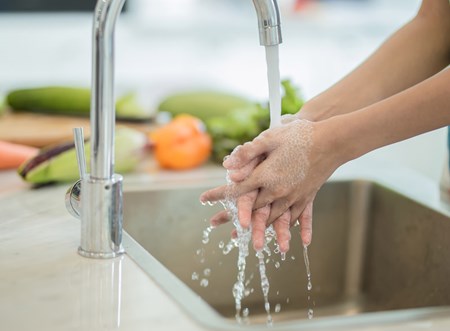
Salmonella
Salmonella is a bacteria that is estimated to cause 1.2 million illnesses and close to 450 deaths each year.
Salmonella can contaminate almost any food, including meats, poultry, eggs, unpasteurized milk or juice, cheese and contaminated raw fruits, vegetables, spices and nuts.
Additionally, drippings from raw meat or poultry can contaminate kitchen surfaces and have been correlated to transmission of salmonella.
It is killed by cooking and pasteurization.
Salmonella also can be spread from contact with animals – specifically baby chicks, ducks, turtles and amphibians – along with pet food and treats.
Though symptoms such as fever, abdominal cramps, severe diarrhea and vomiting last four to seven days and usually resolve on their own, salmonella can cause more serious illness in children, older adults and people with chronic diseases.
To prevent illness:
- Avoid eating high-risk foods like raw or lightly cooked eggs, undercooked ground beef or poultry, and unpasteurized milk.
- Use separate cutting boards and plates for meats and produce.
- Clean hands and surfaces with soap and warm water before and after preparing food.
- Cook foods to a safe internal temperature. Use a meat thermometer to make sure foods are cooked to a safe temperature.
- Practice safe food storage by separating cooked foods from ready-to-eat foods. Keep food properly refrigerated before cooking.
- Use different utensils and plates for cooked foods and raw foods.
- Chill foods promptly after serving and when transporting from one place to another.
- Wash hands after contact with animals, their food or treats, or their living environment.
- Do not kiss chickens, turtles, or lizards.
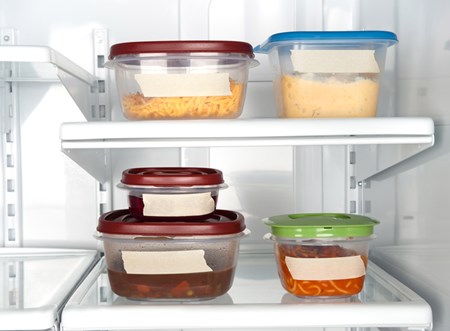
Clostridium perfringens
Causing an estimated 1 million illnesses a year, clostridium perfringens (C. perfringens) ranks among the most common causes of food poisoning in the United States.
C. perfringens bacteria thrive in what is called the “Danger Zone,” a term referring to temperatures between 40 and 140 degrees.
Although cooking kills the C. perfringens cells responsible for food poisoning, illness can occur when meat is not cooked to a high enough temperature and then is held at the ideal temperature for the growth of the bacteria – between 109 and 117 degrees.
This is why infections can often be found when foods are prepared in large quantities and then kept warm for long periods of time before serving, such as in a buffet or at catered events.
Diarrhea and abdominal cramps typically set in eight to 12 hours after ingesting contaminated food and last for less than 24 hours.
To avoid infection:
- Cook foods, particularly meat, poultry and gravies, to a safe internal temperature. Use a food thermometer to double-check food is thoroughly cooked.
- Serve meat dishes hot, ideally within two hours after cooking.
- Reheat food to 165 degrees or above.
- Divide leftovers into shallow containers and refrigerate immediately. Do not let them cool on the counter.
Campylobacter
Campylobacter causes 1.3 million illnesses each year in the U.S and occasionally can result in Guillian-Barre syndrome, a potentially devastating neurologic disorder.
Most cases are traced to eating raw or undercooked poultry (including chicken, turkey, duck, goose and other farmed birds) or food that has come into contact with raw poultry.
Drinking raw or unpasteurized milk or contaminated water also has been linked to campylobacter illness.
To avoid infection:
- Use one cutting board for raw meat (including poultry, seafood and beef), and another separate board for fresh fruits and vegetables.
- Clean all cutting boards, countertops and utensils with soap and hot water after preparing any type of raw meat.
- Make sure all poultry and foods containing poultry (sausages, casseroles, etc.) are cooked to a minimum internal temperature of 165 degrees.
- Practice proper hand-washing and wash your hands thoroughly with soap and water:
- Before, during and after food prep.
- Before eating.
- After using the toilet.
- After changing diapers or cleaning a child who has used the toilet.
- Before and after caring for someone who is sick.
- After touching pets and other animals, or their food or poop.
- After touching garbage.
- Do not drink raw or unpasteurized milk or eat foods that contain raw or unpasteurized milk.
- Do not drink untreated water from a stream, river, pond or lake. Inspect water sources, such as septic tanks or wells, regularly to ensure they are functioning.

E. coli
While it seems that cases of E. coli are more prevalent in the news, only about 176,000 cases of the illness crop up every year.
Most strains of the Escherichia coli bacteria are harmless and are important for a healthy intestinal tract, but some strains can cause severe infections.
The most notorious E coli – 0157:H7 – produces a toxin called Shiga toxin-producing E. coli (STEC) that can lead to severe complications including bloody diarrhea, kidney failure and even death.
E. coli can be found in a multitude of places, but the top offenders are undercooked ground beef, unpasteurized milk and juice, soft cheeses made from raw milk, and raw fruits and vegetables (in 2018, there were two separate outbreaks linked to Romaine lettuce).
To prevent infection:
- Avoid eating high-risk foods.
- Avoid cross-contaminating foods.
- Make sure meat has reached a safe internal temperature by using a meat thermometer. Allow meat to rest for at least three minutes after removing from the heat source.
- Practice proper hygiene and wash hands thoroughly with soap and warm water before preparing food or eating, after using the bathroom or changing diapers, and after having contact with animals and their living environment.
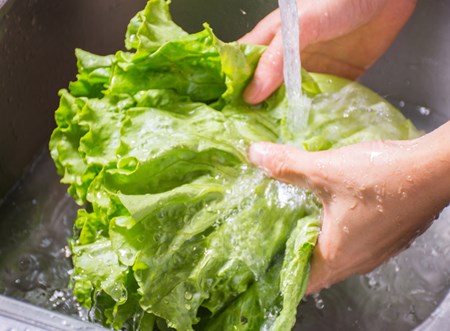
Listeria
Though less common than other pathogens listed above, listeriosis is one of the most lethal – it is estimated to cause more than 250 deaths and close to 1,600 illnesses every year.
Listeriosis is caused by eating food contaminated with listeria, the name for a bacteria found in soil, water and even some animals, including cattle and poultry.
Unlike many other pathogens, listeria can grow in cold temperatures – cooking and pasteurization are the only ways to kill the bacterium.
The most common sources of listeria are raw milk and dairy products (including ice cream and soft cheeses such as queso fresco, feta, brie and camembert), deli meats and hot dogs, refrigerated pâtés or meat spreads, refrigerated smoked seafood, and produce like celery, cantaloupe and raw sprouts.
While listeriosis can infect anyone, those most at risk include pregnant women and their newborns, adults ages 65 and older, and people with weakened immune systems.
To prevent illness:
- Avoid eating unpasteurized dairy products. Persons at high risk should additionally avoid deli meats.
- Keep uncooked meats, poultry and seafood separate from vegetables, fruits, cooked foods and other ready-to-eat foods.
- Rinse raw produce thoroughly under running tap water before eating.
- Use one cutting board for raw meat (including poultry, seafood and beef), and another separate board for fresh fruits and vegetables.
- Clean all cutting boards, countertops and utensils with soap and hot water after preparing any type of raw meat.
- Make sure meat has reached a safe internal temperature by using a meat thermometer.
- Consume perishable and ready-to-eat foods as soon as possible.
Published on: December 10, 2018


